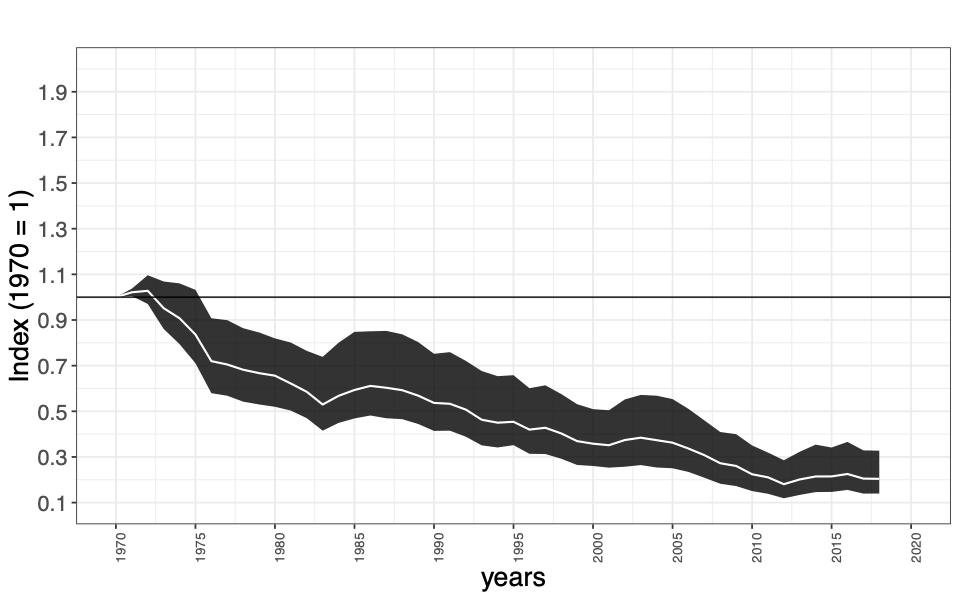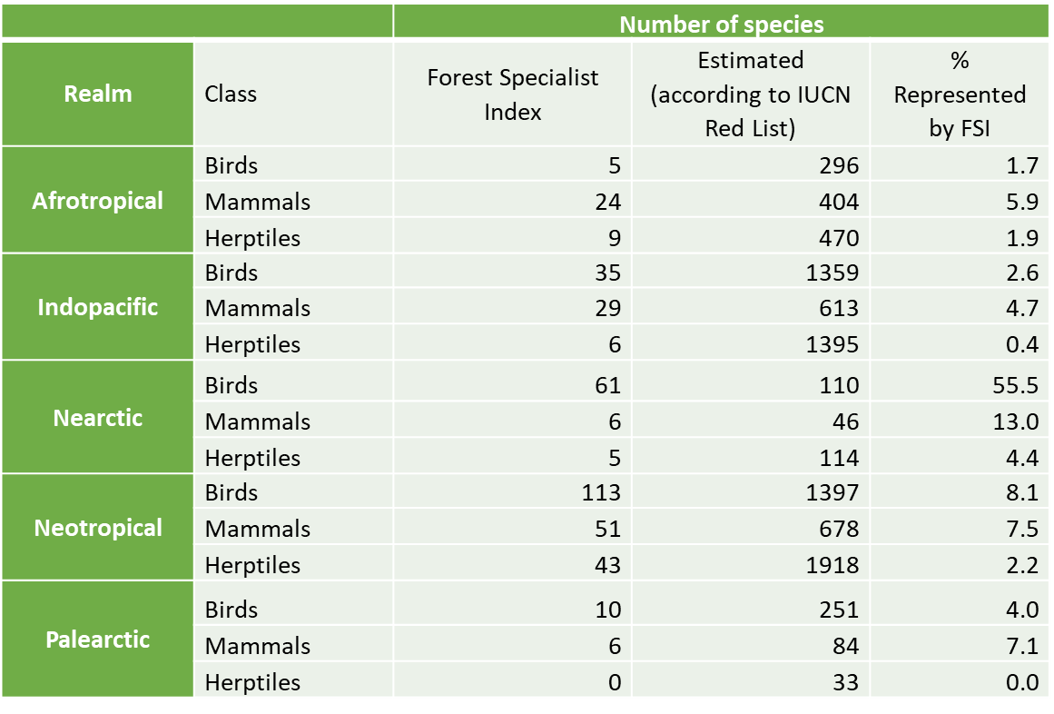Forest Specialists Index
Background
Forest specialists comprise species which live only in forest habitats. The ‘Forest Specialist Index’ or ‘Living Planet Index (Forest Specialists)’ was developed by applying the Living Planet Index (LPI) methodology to forest specialists alone, as a key group of species to monitor alongside forest area-based indicators (FAO 2020). Other forest indicators monitor forest cover or extent but that does not necessarily represent trends in wildlife populations below the canopy (Green et al 2020). By monitoring trends in forest vertebrate populations, we can see the impacts of drivers other than habitat degradation, such that wildlife harvesting, and disease.
We published the first Forest Specialist Index in 2019: Below the Canopy: Plotting Global Trends in Forest Wildlife Populations). Below The Canopy was the first-ever global assessment of forest-dwelling wildlife populations and highlighted the multitude of threats forest-living species face. The 2019 Forest Specialist Index studied changes in 268 species and found that monitored forest populations of vertebrates (mammals, birds, reptiles and amphibians) declined by 53% on average between 1970 and 2018. Declines were greatest in tropical forests, such as the Amazon rainforest. We share an updated Forest Specialist index (FSI) here, studying changes in a greater number of populations, which now involves the analysis of 343 species between 1970 and 2018.
2022 Updated Forest Specialist Index
The Forest Specialist Index was updated in 2022 after concerted data collection from under-represented regions of the world. We added 75 species and 973 populations to the data set, increasing the representation particularly for Neotropical species. The 2022 update of the Forest Specialist Index shows an 79% decline on average in the monitored populations, between 1970 and 2018.
In order to investigate the representation of new data, we compared the proportion of threatened species in the FSI to the proportion of threatened species on the IUCN Red List and found that threatened species are not over-represented in the FSI.

Post-2020 Global Biodiversity Framework
WWF and ZSL are recommending the Forest Specialist Index as a Global Biodiversity Framework monitoring indicator. It is suitable for inclusion as a complementary indicator under proposed Goal A and Target 2, as it can highlight progress towards the enhancing the integrity and restoration of forest ecosystems. As we move towards the development of a new Global Biodiversity Framework, and associated monitoring framework, in which targets are likely to be based on quantitative forest metrics, it is more important than ever that we track indicators that are also able to report on forest quality. We also feel the FSI has potential relevance for the business and commodities targets around the Implementation and Mainstreaming Goal. It is important that we do not lose sight of forest-specific indicators under the emerging Global Biodiversity Framework as the forest-specific targets that existed under the Aichi Convention on Biological Diversity will be replaced with the inclusion of forests under broader metrics on terrestrial ecosystems.

Further information
- Green EJ, McRae L, Freeman R, Harfoot MBJ, Hill SLL, Baldwin-Cantello W, Simonson WD. (2020) Below the canopy: global trends in forest vertebrate populations and their drivers. Proceedings of the Royal Society B, 287(1928): 28720200533.
- FAO and UNEP. 2020. The State of the World’s Forests 2020. Forests, biodiversity and people. Rome
- Factsheet for Forest Specialist Index on Biodiversity Indicators Partnership https://www.bipindicators.net/indicators/living-planet-index/living-planet-index-forest-specialists
Partners
WWF UK

